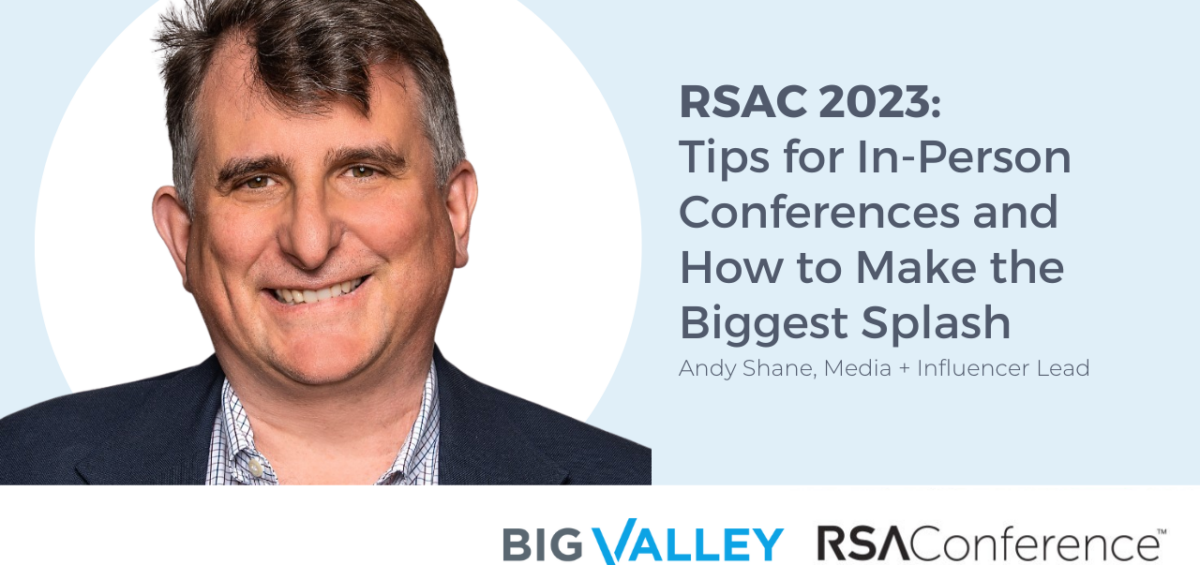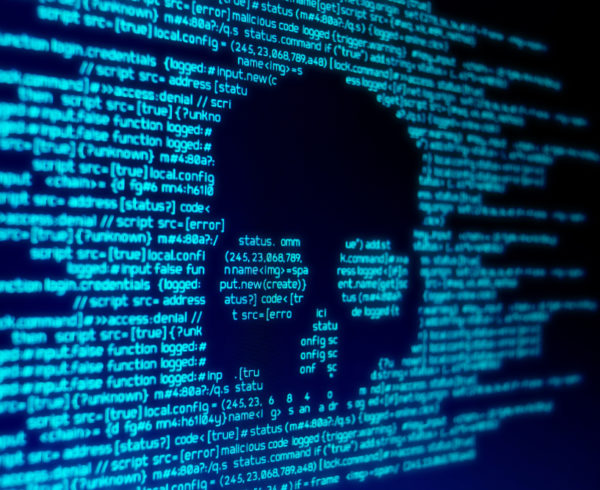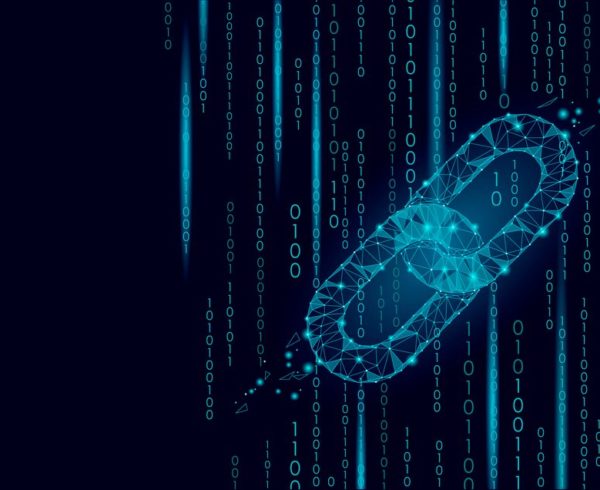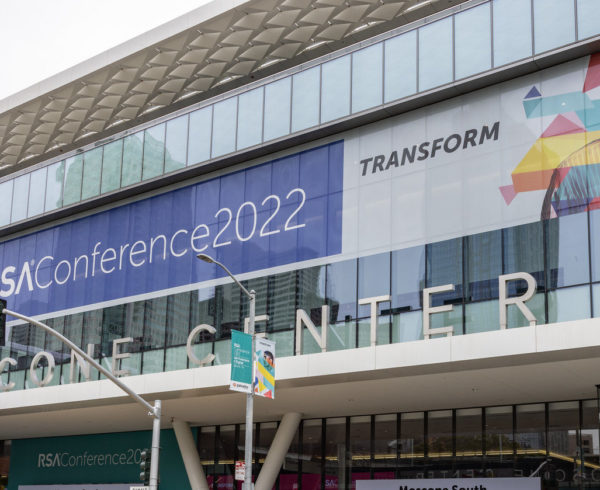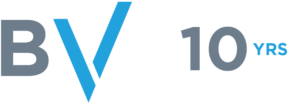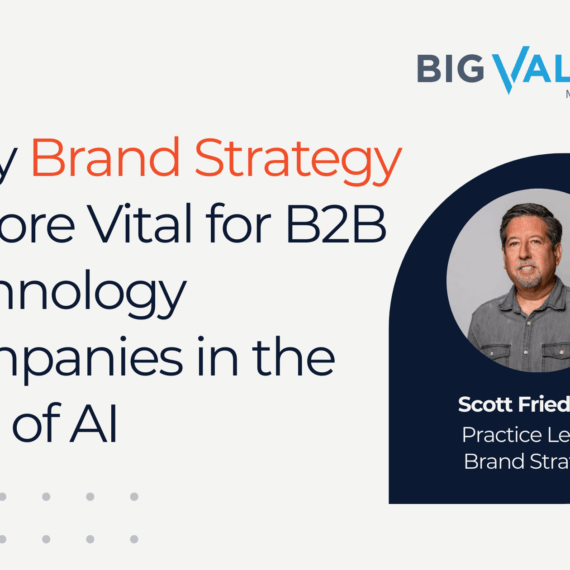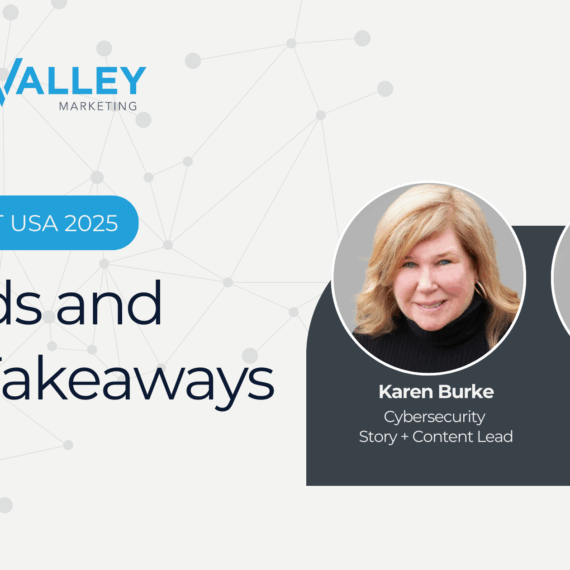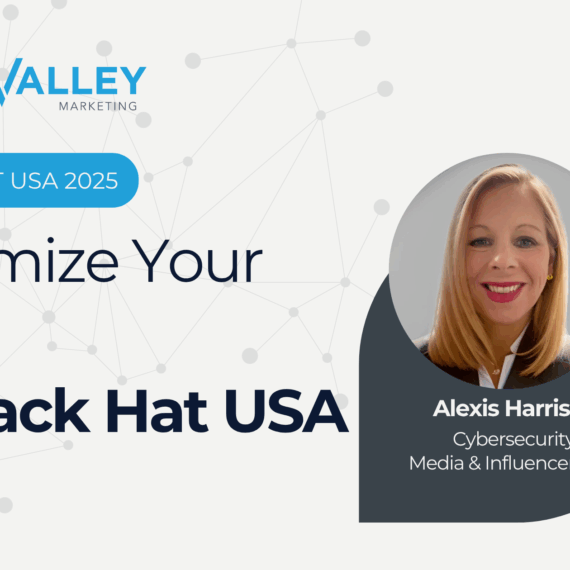The Roads Most Traveled Take Us to RSA 🚗
For Josh Swarz, myself, and the other seasoned professionals at Big Valley Marketing, trade shows provide an opportunity to further position our clients as thought leaders by sharing their stories with the media. With more than 2,000 shows under our collective belts, Big Valley Leadership, Client Partner Leads, Story + Content Leads, and Media + Influencer Leads have traveled the world and seen the ‘finest trade show floors’ in Vegas, NYC, San Francisco, Vatican City, Chicago, Munich, San Diego…

Josh and I (who have about 125 shows between us) are heading to the Moscone Center in San Francisco this April 24-27 for the RSA Conference 2023, with the goal of making this show the most successful one yet for our cybersecurity clients. While I won’t be giving away all of our secrets, here are a handful of tips on how we will be doing just that — before, during, and after RSA:
Pre-Show: Getting the Interview(s)
Do our clients have something newsworthy they are unveiling at the show? Are our SMEs regularly talking to the media (are media routinely searching them out)? Is this a coming-out party for an SME? Do we have a contrarian view of something that is being widely reported? Whatever the case, we succinctly package and present to the media a personalized reason as to why they would want to talk to our clients.
At the Show
Of course, we make sure our clients are prepared, but we also make sure our clients understand the purpose of the meeting. Yes, we would love for an article to come out of the interview/meeting, but just as important is building a relationship with the reporter. Ideally, we want these reporters to reach out to us — and they do — saying, “I’m doing a story on X, and I’d like to speak with Y, who I met with at RSA.”
One of the ways we know our clients will ‘deliver’ to the media is by ensuring the client is ready for the interview. It sounds simple, but having a focused client who is clear on the topic, what the reporter is looking for, and what they want to say can make all the difference in the world.
Whenever possible, Josh and I will meet with our client 15-20 minutes before the interview to review the briefing document we prepared before the show. We also go over the three to four messages the client spokesperson wants to get across; what questions we think the reporter will ask; how and when we answer those questions; and bridge to our pre-prepared messages.
During the interviews, we let the reporter and client meet and get to know each other. We strategically jump in when it makes sense to remind our client about a salient point or to ask a relevant question of our client that will spawn messaging the reporter will find compelling.
Once the interview wraps up, we must level up in front of our client and the reporter the subsequent steps/expectations — will an article be developed? When? Are we following up with anything? Can we talk again in a few months?
The reality is, Josh and I (and our M+I colleagues) have spent our careers building relationships with many of these reporters (and it’s a blast to see them, post-COVID, at these shows). These relationships have been developed not because we are great people; it’s because we know what these reporters need and want, and we don’t waste their time.
After the Show
You might be surprised to know how much of an impact a simple thank you note makes on the reporters we meet with, indicating what was discussed/learned during our interview. We also follow up with the reporter on the topics we discussed and areas we learned are important to the reporter based on what was discussed during the interview.
… San Jose, Baltimore, Atlanta, San Antonio, London, Dallas, Phoenix, Geneva… No matter where the trade show takes you, ‘it’ always comes down to sharing a compelling story (or person) with the appropriate news outlet(s). If you think of a trade show as a media alert, the show is the ‘where.’ Important, yes, but just one factor in telling the complete story. Ultimately, whether it’s a trade show, Zoom meeting, phone call, or in-person interview at an office, it will always be about telling a compelling story to the appropriate audience.

